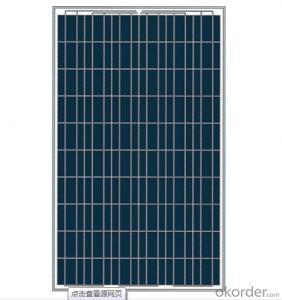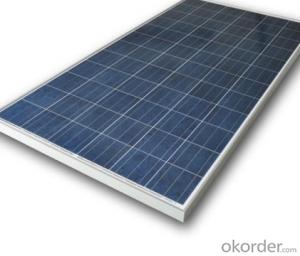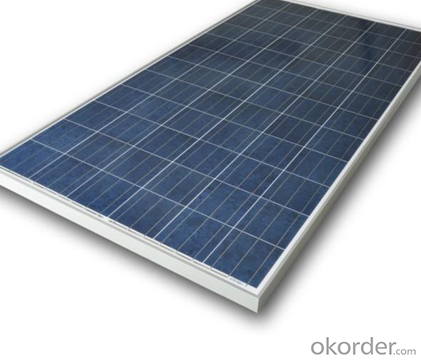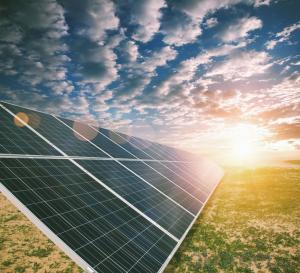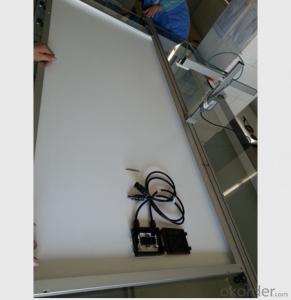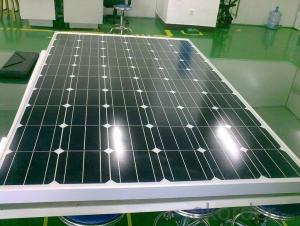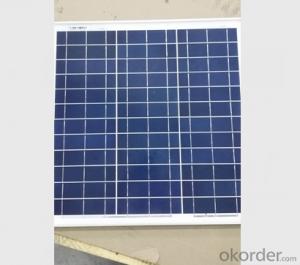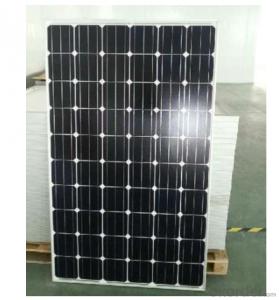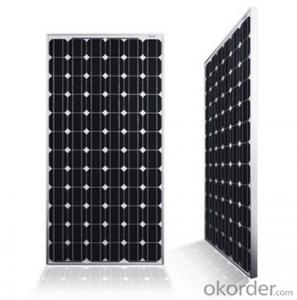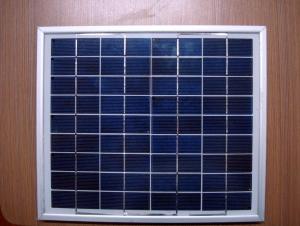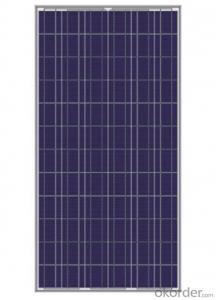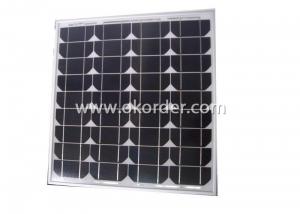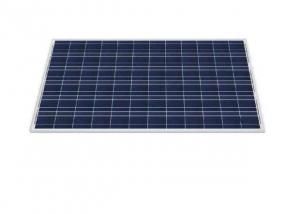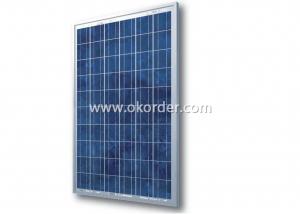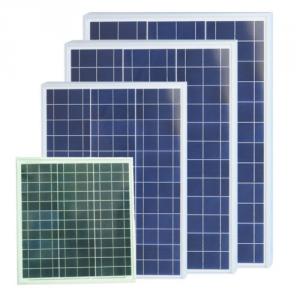Solar Panels for Sale Houston - Polycrystalline Solar Panel CNPV-250W High Performance 60 Cell
- Loading Port:
- Qingdao
- Payment Terms:
- TT OR LC
- Min Order Qty:
- 25 pc
- Supply Capability:
- 100000 pc/month
OKorder Service Pledge
OKorder Financial Service
You Might Also Like
Product Description:
Solar Polycrystalline Series Panels
Introduction of Solar Polycrystalline Series Panels
CNBM Solar photovoltaic (PV) Panel is designed for large electrical power requirements. It is the optimal choice for both on-grid and off-grid power systems. CNBM Solar panel offers high performance of power per square foot of solar array. Monocrystalline silicon(c-Si): often made using the Czochralski process. Single-crystal wafer cells tend to be expensive, and because they are cut from cylindrical ingots, do not completely cover a square solar cell module without a substantial waste of refined silicon. Hence most c-Si panels have uncovered gaps at the four corners of the cells.
Standard Test Conditions of Solar Polycrystalline Series Panels
The opto-electrical specifications shown below are stabilized values being measured at Standard Test Conditions, Irradiance: 1000W/m2, Spectrum: AM1.5 at 25°C, The info below is subject to manufacturing tolerances. Where appropriate minutes of measurement are available and are used for the dimensioning of the installation.
Polycrystalline Silicon Solar Cells156mm Advantage:
• High efficiency and stable performance in photovoltaic conversion.
• Advanced diffusion technique ensuring the homogeneity of energy conversion efficiency of the cell.
• Advanced PECVD film forming, providing a dark blue silicon nitride anti-reflection film of homogenous color and attractive appearance.
• High quality metal paste for back surface and electrode, ensuring good conductivity, high pulling strength and ease of soldering.
• High precision patterning using screen printing, ensuring accurate busbar location for ease with automatic soldering a laser cutting.
Characteristics of Solar Polycrystalline Series Panels
Max Power Voltage Vmp (V) | 31.05V |
Max Power Current Imp (A) | 8.4A |
Open Circuit Voltage Voc (V) | 38.2V |
Short Circuit Current Isc (A) | 8.94A |
Max Power Pm (W) | 260W |
Temperature Coefficient of Cells
NOCT | 47℃±2℃ |
Temperature Coefficients of Isc (%/℃) | 0.064 |
Temperature Coefficients of Voc (%/℃) | -0.33 |
Temperature Coefficients of Pmp (%/℃) | -0.45 |
Mechanical Data Solar Polyocrystalline Series
Power | 260W |
Dimension | 1650×992×35mm |
Weight | 18kg |
Tolerance | ±3% |
The dimension of the modules can be changed according to the demand of clients
Limits
Operating Temperature | –40 °C to +85°C |
Storage Temperature | –40 °C to +85°C |
Max System Voltage | 700V |
Guarantee Solar Polyocrystalline Series Panels
Products Guarantee | 12 yrs free from defects in materials and workmanship |
Performance Guarantee | No less than 90% within 10yrs and no less than 80% within 25yrs |
Certificates | UL, IEC, ISO, TUV, CE |
The Examination of Solar Polyocrystalline Series Panels
FAQ
We have organized several common questions for our clients,may help you sincerely:
1. What’s price per watt?
A: It’s depends on the quantity, delivery date and payment terms of the order. We can talk further about the detail price issue. Our products is high quality with lower price level.
2. Can you tell me the parameter of your solar panels?
We have different series of cells with different power output, both from c-si to a-si. Please take our specification sheet for your reference.
3. How do you pack your products?
We have rich experience on how to pack the panels to make sure the safety on shipment when it arrives at the destination.
Normally we put the panels in carton and then in pallets.
4. Can you do OEM for us?
Yes, we can. It will depend on the quantity.
- Q: How can solar panels be integrated into building designs?
- Solar panels can be integrated into building designs by incorporating them into the roof or facade of the building. This involves installing solar panels in a way that seamlessly blends with the architecture while maximizing exposure to sunlight. Additionally, solar panels can also be integrated into shading devices, windows, or canopies to generate electricity while providing additional functions such as shading or daylighting.
- Q: How do solar panels affect the property's energy consumption?
- Solar panels can significantly reduce a property's energy consumption by generating electricity from sunlight, thereby offsetting the need to draw power from the grid. This helps to lower utility bills and decrease reliance on fossil fuels, leading to both financial and environmental benefits.
- Q: Please tell me what they are made of and how the materials help the solar cell produce electricity. Im doing a science projects so i need help on knowing all this info. Its a debate, so i need correct information please.I will please need more information about the bad things about solar energy and solar panels. Please say what solar panels do to create pollution or do anything that is not friendly to the environment. If you want just give me a website. Thank you
- A okorder /, or resistance—vary when light is incident upon it) which, when exposed to light, can generate and support an electric current without being attached to any external voltage source, but do require an external load for power consumption.
- Q: I'm re-doing my roof. Is it workable?Can I get a government grant or something to put solar panels on my roof?I know they did something like that for windows.
- solar panels are only about 20% or so efficient right now but you get great tax break in the US --- mostly.. wish you well... ps not that cheap but most companies installing these systems will supply with all grant papers for free.
- Q: Can solar panels be used for air conditioning?
- Yes, solar panels can be used for air conditioning. By converting sunlight into electricity, solar panels can power air conditioning units, reducing reliance on the grid and providing a renewable energy solution for cooling purposes. However, the efficiency and capacity of solar panels may vary depending on factors such as the size of the system, available sunlight, and the energy demands of the air conditioning unit.
- Q: Can solar panels be installed on a sports stadium?
- Yes, solar panels can be installed on a sports stadium.
- Q: Can solar panels be installed on community buildings?
- Yes, solar panels can be installed on community buildings. In fact, community buildings like schools, libraries, and community centers are excellent candidates for solar panel installations as they often have large roofs or open spaces that can accommodate solar arrays. Installing solar panels on community buildings not only helps reduce electricity costs but also promotes sustainability and clean energy in the community.
- Q: We see increasing, what appear to be, solar panels on electric poles?
- Solar powered street lights . They work really well but expensive
- Q: How much energy can a solar panel generate?
- The amount of energy a solar panel can generate depends on several factors, including its size, efficiency, and the amount of sunlight it receives. On average, a typical solar panel can generate between 250 to 400 watts of power per hour. However, larger and more efficient solar panels can produce even higher amounts of energy.
- Q: Can solar panels be used to power a cruise ship?
- Yes, solar panels can be used to power a cruise ship, but it may not be the sole source of power due to the large energy demands of a cruise ship. However, solar panels can contribute to the overall energy supply of a cruise ship, reducing its reliance on fossil fuels and decreasing its environmental impact.
Send your message to us
Solar Panels for Sale Houston - Polycrystalline Solar Panel CNPV-250W High Performance 60 Cell
- Loading Port:
- Qingdao
- Payment Terms:
- TT OR LC
- Min Order Qty:
- 25 pc
- Supply Capability:
- 100000 pc/month
OKorder Service Pledge
OKorder Financial Service
Similar products
Hot products
Hot Searches
Related keywords
